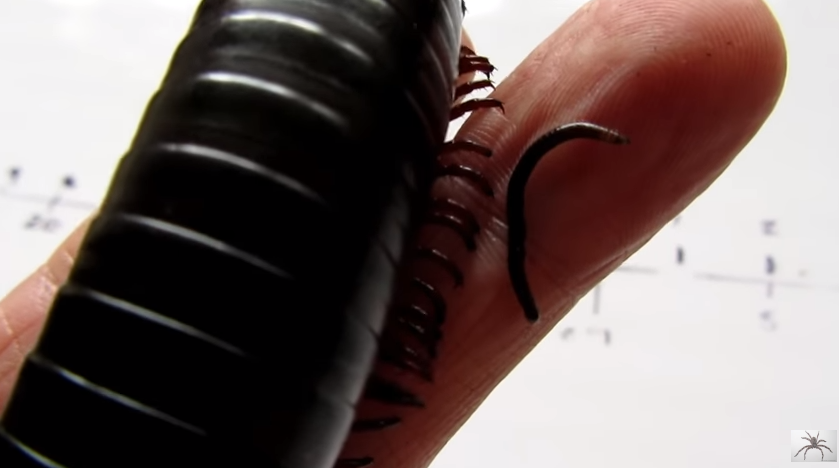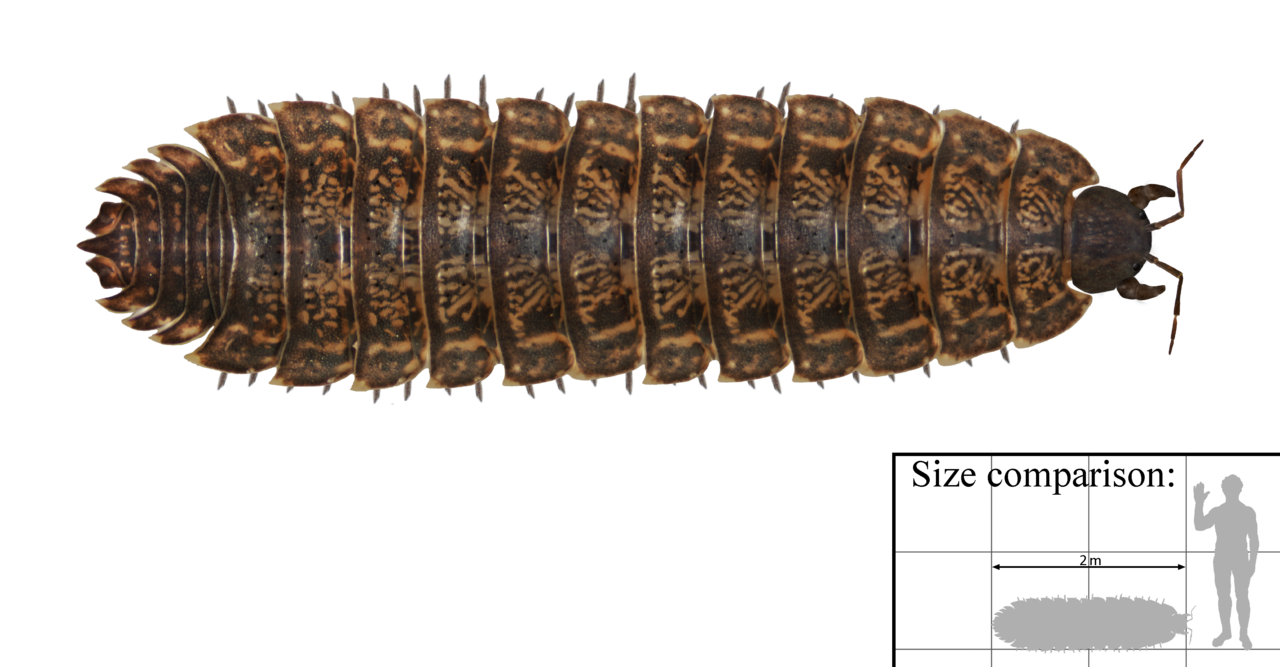Welcome to another post of my strange animals series where you get to meet some of the weirdest, coolest, and craziest animals in the world.
In today's post I want to share and talk a bit about a really cool video I stumbled upon a few days ago. The video's title is "Largest Millipede meets Smallest Millipedes" and I think it's quite self-explanatory of what you should expect to see.
I am sure the difference in size between the two creatures will amaze you! Enjoy:
The big guy in the video is an adult female African Giant Millipede (Archispirostreptus gigas) and the small guy is a European White Legged Snake Millipedes (Tachypodoiulus niger). I think it's really funny how the small one is barely bigger than the legs of A. gigas!
 Credit: Frankus Lee
Credit: Frankus Lee
Now, here's some more info about the two species if you want to learn more about them!
Archispirostreptus gigas
Commonly known as the giant African millipede, A. gigas is the world's largest extant millipede, growing up to 38.5 cm (15.2 in) in length and 6.7 cm (2.6 in) in circumference. This beast has 256 legs, which might sound like a lot, but is nothing compared to Illacme plenipes, which can have up to at least 750 legs!
 (credit)
(credit)
The species is endemic and widespread "in lowland parts of East Africa, from Mozambique to Kenya, but rarely reaches altitudes above 1,000 metres (3,300 ft). It lives mostly in forests, but can also be found in areas of coastal habitat that contain at least a few trees. It is known in Zulu as amashongololo. It is also native to Southern Arabia, especially Dhofar." [1]
Here's another video that will give you a better idea of how big this beast can actually get:
Fun Fact: If you think A. gigas is a monster wait until I tell you about Arthropleura!
Arthropleura is a genus of long extinct millipedes, that lived in what is now northeastern North America and Scotland about 300 million years ago. These guys were TRUE MONSTERS, with a length ranging from 0.3 to 2.3 meters and a width up to 50 cm!
Despite their huge size, these were gentle giants, feeding only on plants. Still, quite a scary sight to behold:
 Artistic impression and size comparison to a human of an Arthropleura millipede (credit)
Artistic impression and size comparison to a human of an Arthropleura millipede (credit)
Tachypodoiulus niger
Commonly known as white-legged snake millipede or just as the black millipede, T. niger is a small european millipede, occurring "in the British Isles, Spain, France, Benelux, Germany, Switzerland, Austria and the Czech Republic, and is especially common on chalky and limestone soils." [2]
With a size ranging from 1.5 to 4 cm, it's one of the smallest but definitely not the smallest millipede.
The one holding that record I believe is Polyxenus lagurus which is only 2-3 mm long! Feel free to correct me in the comments if I am wrong!
 Bristly millipede (credit)
Bristly millipede (credit)
Commonly known as the bristly millipede, this species occurs in many areas of Europe, Central Sahara and North America. Other than its very small size, the species is easily distinguished by the tufts and rows of bristles on its body[4]
The End
I hope you enjoyed reading this post. Initially, I only wanted to talk about the 2 species shown in the video but I guess I got a bit sidetracked! Like always, don't forget to visit the references down below if you want to learn more about the species I talked about in this post.
More Strange Animals
Here are some of my latest posts. If you like reading about strange animals I think you will like them:
- This Hummingbird Is Just So Weird! Can You Guess Why?
- This Deep Sea Creature Looks Like An Alien Spaceship (Lampocteis cruentiventer)
- 3 Very Strange Animals I First Heard Of This Week
- The Weird Looking Cantor's Giant Softshell Turtle
- Gasteracantha: Tiny Spiders From Hell!
- 7 Horrifying Micro-Monsters That Will Haunt Your Dreams
- Greta oto: The Butterfly With The Transparent Wings
- Crickets, Grasshoppers And Other Disgusting Things Are An Excellent Source Of Iron (And Other Minerals!)
References
- Wikipedia.org/wiki/Archispirostreptus_gigas
- Wikipedia.org/wiki/Tachypodoiulus_niger
- Bmig.org.uk/species/polyxenus-lagurus
- Wikipedia.org/wiki/Arthropleura
 Steemstem & SteemitEducation
Steemstem & SteemitEducation
Steemstem is the go-to place for science on Steemit. Check it out at @steemstem or visit the #steemSTEM channel. A big thank you also goes to the guys from @steemiteducation for supporting my content!
Greek Community
A final big thanks goes to my fellow greeks for their support and love. Follow the greek-trail or check the facebook page for more greek content!


